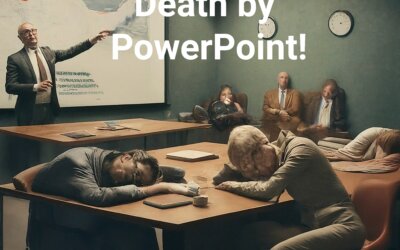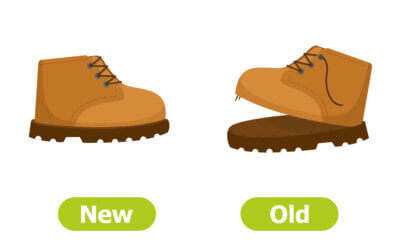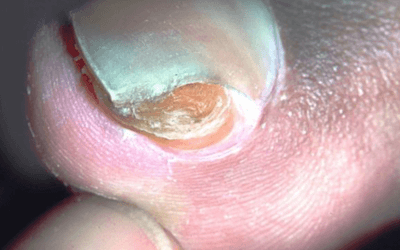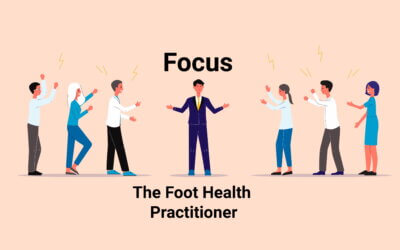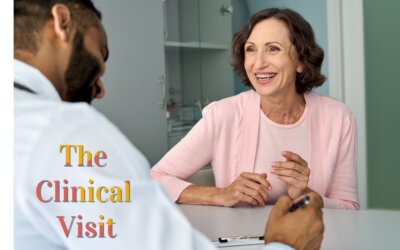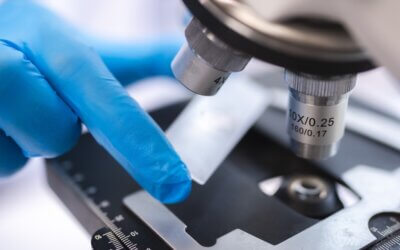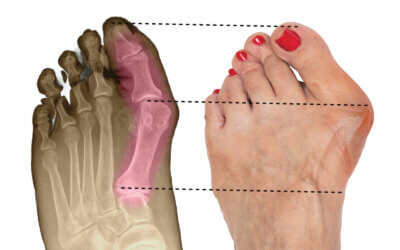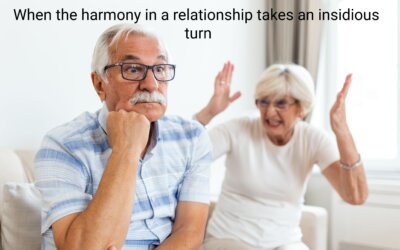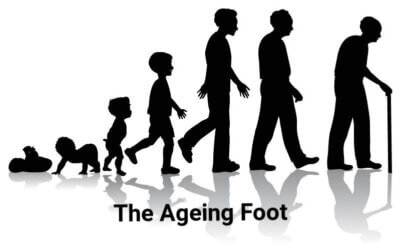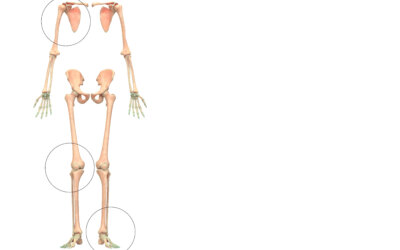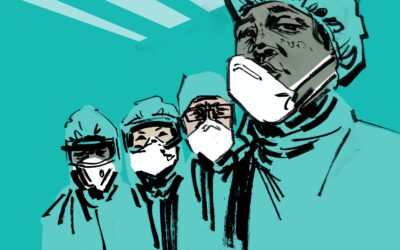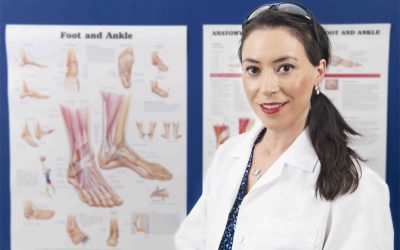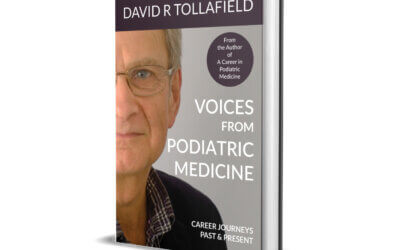Tips on Public Speaking
Well, it is simple. Good speakers feel that PowerPoint makes people lazy, leading to a lack of being prepared. I thought it was a good topic as conference season is starting to warm up for some. Preparation is everything and of course, your talk looks better for those slides. I am a strong proponent of PowerPoint, but I have to say it is poorly used more than it is used well. In preparing this short article I have adopted the term Death by PowerPoint because it really can kill what could be a good talk. A few tips might not go amiss.
Should You Repair Old Shoes
Podiatrists would usually say to change shoes when the heel wears and certainly do not re-heel, but I am not of that ilk despite it being more ideal. Well, chucking out shoes is all right, and it’s good if you can afford it! Despite this warning, I have never had to worry about my posture or foot being affected by a repair. If you can afford to throw away shoes and buy new models, then do this in preference to a service. (Author’s sole illustrated). The brown shoes are typically worn for most adults at the heel. The bottom line is that the design and makeup of the shoe and its robustness will depend on the material and whether it can be made well.
A Bone Swelling on the Big Toe
An injury to the toe is common, not least because the toe sticks out at the end of the body. The excessive growth, like hyper granulation in an ingrown toenail, confuses the clinician because the skin is shiny, stretched, red and easily knocked. I always sent off my bone samples once removed at our local hospital for some years, and they used a specialist hospital in Glasgow to peer review any interpretation. I knew that elsewhere in the body, the bone-cartilage lesion known as an osteochondroma could become malignant in <5% of cases, but in the foot, this is rare.
Shingle Bells Don’t Get Caught
Christmas is about family, having fun with grandchildren, singing carols, unexpected presents, laughter, and overindulgence. On Boxing Day, I felt a peculiar sensory tenderness around my left thigh. There was nothing visible, but the sensation was quite uncomfortable. Analgesics merely subdued the discomfort.
The Foot Health Practitioner
From time to time, those who have trained and established foot health services have faced challenges because, outside the HCPC, there is no register other than a submission to a voluntary FHP register RFHP. As a parallel argument for accountability, foot surgery developed by podiatrists caused an equal sense of rebellion from traditional medics, largely orthopaedic surgeons. When podiatrists felt an equal sense of injustice that a less rigorous course mimicked their three-year training and hard work, there was a certain irony. In the case of those known as podiatric surgeons, the HCPC provided a register of those annotated, affording not only standards that needed to be met but also accountability post-2015. The comparison between surgery, surgeons and FHPs ends there because the scope and risks are not in the same league.
The Physician’s Touch
The body, its organs and its muscular-skeletal system are all linked. If we help one, we help all. The clinical examination relies on a patient providing accurate information, which can be performed quickly using the principles of observation, good questioning techniques, and appropriate examination. For the average physician, time is vital, and the amount of information deduced and analysed can only come with years of practice, good education and mentoring. The next time you see a clinician, you may find that you are better informed.
The Physician’s Ear
Clinicians require a keen ear to absorb the information provided by the patient. Those short sentences contain the heart of the information that guides diagnosis and the following process, whether examination of the affected part or the need to seek investigations. The process is well established, and if you know what to expect, you can optimise your clinical visit.
The Physician’s Eye
The state of observation can only provide a suspected condition and is far from definitive. A clinical examination requires the patient to provide information, but the clinician will observe and listen to exclude the most obvious signs of disease before taking the all-important history. The chance of cardiovascular disease may well be suspected by facial colour, which includes the lips. The next time you see a doctor or specialist, you will be more aware of the fact that you are on show the moment you enter the room. Like a computer, he or she is processing you, gathering data and may have a diagnosis already!
Calories You and Your goal
Barney works in the leisure industry and so can see the efforts of people trying to keep fit and lose weight. Here he writes about the well known balance between effort in exercise and energy loss versus taking in energy as food. He has added some worked examples for those who want a bit more information
The Clinical Visit
Comprising three distinctive parts, the clinician uses the five senses to guide the process–one might take the humourous view of Sherlock Holmes or Poirot in determining evidence from visual observation and verbal questioning. I hope these small introductory articles provide some interest. The first in the series covers observation as in the Physician’s Eye.
Why Can’t You Make Ganglions Disappear?
Hitting any tissue is not recommended, and indeed, one should avoid using computer tablets and iPads in place of the Bible – that is, unless you are searching for information such as this site, then hit the keyboard instead.
Can an Ingrown Nail Kill?
You should not experience more pain than needed, as you would expect from dental treatment. If the clinician is unable to provide an anaesthetic, then ask to see someone who can provide this service. Only registered people trained as podiatrists or medically qualified people can provide local anaesthetics. All registered podiatrists have been trained in using local anaesthetics from 1988 onwards. Pain is the giveaway, tenderness to touch
How Long Does Bunion Surgery Last?
Fusion is a safer bet than most alternatives and offers better longevity. Third surgeries seldom come without loss of function. More surgery involves deeper tissue scarring, and even then, a joint-sparing operation could lead to limited joint movement. Minimal incisional surgery (MIS) appeals to many for obvious reasons, but the follow-up is not as well presented as other surgeries and is limited to specific criteria. MIS is available and has advantages. New screw systems allow surgical placement through keyholes under X-ray-guided control.
A Quick Guide to Skin Biopsy
This article will describe the main types of sampling skin and include:
Shave
Punch
Excisional
Please note that some of the hyperlinked videos shown are graphic and do not show the foot as specific examples.
New Bunion Guide for Patients
This new edition is without doubt an extensive tour de force of all thing’s bunion.
David Tollafield wisely teamed up with Dr Tim Kilmartin bringing together two experts with 60 years’ experience of caring for patients and fixing bunions. It’s fair to say few, if any, will have contributed more to the development of podiatric surgery and bunion correction in the UK. And what a result, this book leaves no stone unturned in helping patients understand what a bunion is, how to manage the condition themselves before delving into the surgical options, surgical risks and complications.
The Negative Benefits of Exercise
Part of the tale clarifies the importance of proper diagnosis in directing correct treatment. But how many patients are fobbed off? NHS versus the independent sector springs to mind; both have their value and benefits. Who do you consult?
For the most part, it would be the GP. If it were purely medical, that would be my route, but because I was a lower limb MSK specialist, I knew my way around the UK healthcare system better than most. I am over a year on today, and my shoulder is 90+% better, and the treatment was excellent.
Fiction to Aid Real-Life Conditions
Consider the common problem of repetitive wrist strain. Anna goes to her doctor, who is an okay man but too laid back compared to the GP who dealt with my patient when I first experienced the condition. The doctor decided the actual patient, who was fourteen, was mad and all in her head, so he sent her to a psychiatrist. In David’s latest book—Fatal Contracts, we are dealing with consent—under his pen name R.C.Blyth, he uses fiction to drive the narrative and inform people about a little known condition still very much alive.
Living With Someone Who Has Hearing Loss
The national institute provides a guide, but both parties have to agree with all guides. It might be worth looking at the recommendations and discussing the real outcome. The recommendations are sensible but may not always be ideal. We must work to improve communication; there is only one solution—patience!
Midfoot Pain Mysteries
Alternatives to steroids include sodium hyaluronate as Ostenil, which has some promise in some patients. Sodium hyaluronate is found in normal synovial fluid, which bathes joint surfaces and provides some nutrient service.
The Ageing Foot
We are made from interactive organs and a skeleton combined with a blood and nerve supply controlled by the brain. There are no anatomical parts which fail to display a lack of weakening. Some do better than others. Sitting in a place from which to observe our fellow man, we see all types of movement. Children running around with a complete lack of pain or concern for weakened muscles slowing pace, lack of breath or poor reflexes. The foot is an organ of the body as it comes as a complete package controlled but all the above organs. However, it is a functional part of the anatomy, which means it moves, has to take load and reflects medical diseases.
Tips on Public Speaking
Well, it is simple. Good speakers feel that PowerPoint makes people lazy, leading to a lack of being prepared. I thought it was a good topic as conference season is starting to warm up for some. Preparation is everything and of course, your talk looks better for those slides. I am a strong proponent of PowerPoint, but I have to say it is poorly used more than it is used well. In preparing this short article I have adopted the term Death by PowerPoint because it really can kill what could be a good talk. A few tips might not go amiss.
Should You Repair Old Shoes
Podiatrists would usually say to change shoes when the heel wears and certainly do not re-heel, but I am not of that ilk despite it being more ideal. Well, chucking out shoes is all right, and it’s good if you can afford it! Despite this warning, I have never had to worry about my posture or foot being affected by a repair. If you can afford to throw away shoes and buy new models, then do this in preference to a service. (Author’s sole illustrated). The brown shoes are typically worn for most adults at the heel. The bottom line is that the design and makeup of the shoe and its robustness will depend on the material and whether it can be made well.
A Bone Swelling on the Big Toe
An injury to the toe is common, not least because the toe sticks out at the end of the body. The excessive growth, like hyper granulation in an ingrown toenail, confuses the clinician because the skin is shiny, stretched, red and easily knocked. I always sent off my bone samples once removed at our local hospital for some years, and they used a specialist hospital in Glasgow to peer review any interpretation. I knew that elsewhere in the body, the bone-cartilage lesion known as an osteochondroma could become malignant in <5% of cases, but in the foot, this is rare.
Shingle Bells Don’t Get Caught
Christmas is about family, having fun with grandchildren, singing carols, unexpected presents, laughter, and overindulgence. On Boxing Day, I felt a peculiar sensory tenderness around my left thigh. There was nothing visible, but the sensation was quite uncomfortable. Analgesics merely subdued the discomfort.
The Foot Health Practitioner
From time to time, those who have trained and established foot health services have faced challenges because, outside the HCPC, there is no register other than a submission to a voluntary FHP register RFHP. As a parallel argument for accountability, foot surgery developed by podiatrists caused an equal sense of rebellion from traditional medics, largely orthopaedic surgeons. When podiatrists felt an equal sense of injustice that a less rigorous course mimicked their three-year training and hard work, there was a certain irony. In the case of those known as podiatric surgeons, the HCPC provided a register of those annotated, affording not only standards that needed to be met but also accountability post-2015. The comparison between surgery, surgeons and FHPs ends there because the scope and risks are not in the same league.
The Physician’s Touch
The body, its organs and its muscular-skeletal system are all linked. If we help one, we help all. The clinical examination relies on a patient providing accurate information, which can be performed quickly using the principles of observation, good questioning techniques, and appropriate examination. For the average physician, time is vital, and the amount of information deduced and analysed can only come with years of practice, good education and mentoring. The next time you see a clinician, you may find that you are better informed.
The Physician’s Ear
Clinicians require a keen ear to absorb the information provided by the patient. Those short sentences contain the heart of the information that guides diagnosis and the following process, whether examination of the affected part or the need to seek investigations. The process is well established, and if you know what to expect, you can optimise your clinical visit.
The Physician’s Eye
The state of observation can only provide a suspected condition and is far from definitive. A clinical examination requires the patient to provide information, but the clinician will observe and listen to exclude the most obvious signs of disease before taking the all-important history. The chance of cardiovascular disease may well be suspected by facial colour, which includes the lips. The next time you see a doctor or specialist, you will be more aware of the fact that you are on show the moment you enter the room. Like a computer, he or she is processing you, gathering data and may have a diagnosis already!
Calories You and Your goal
Barney works in the leisure industry and so can see the efforts of people trying to keep fit and lose weight. Here he writes about the well known balance between effort in exercise and energy loss versus taking in energy as food. He has added some worked examples for those who want a bit more information
The Clinical Visit
Comprising three distinctive parts, the clinician uses the five senses to guide the process–one might take the humourous view of Sherlock Holmes or Poirot in determining evidence from visual observation and verbal questioning. I hope these small introductory articles provide some interest. The first in the series covers observation as in the Physician’s Eye.
No Results Found
The page you requested could not be found. Try refining your search, or use the navigation above to locate the post.
Living With Someone Who Has Hearing Loss
The national institute provides a guide, but both parties have to agree with all guides. It might be worth looking at the recommendations and discussing the real outcome. The recommendations are sensible but may not always be ideal. We must work to improve communication; there is only one solution—patience!
Starter Guide for Taping
We can use commercially developed braces and soft forms of splinting to support joints and soft tissue (ligaments and muscle) to limit pain, support function and, above all, provide continuing activity whilst limiting damage. Tapes adhered to the skin have been promoted as an adjective for achieving the same aim. In this article, I will bring some ideas into focus about taping (strapping). While you can undertake these at home, placement and technique are best applied with someone to aid your technique. Focusing on the shoulder, the knee and the ankle provides an idea of how assistance can be used and I have delved into my own experience as a patient.
Sun and Skin Warnings
David explains a solar damage on the face, his consultation and treatment during the Covid experience as part of a case history for the readership at consultingfootpain.co.uk
The Irritating Little Toe
In this self-help article, the irritating little toe problem is discussed. Usually the problem will settle within a week of self prescribed care. I have chosen this subject as the condition is slightly different from the usual fungal infection affecting the toe. Before panicking and thinking you are unclean read this article from ConsultingFootPain.
Factsheets for Patients
ITelling a story is powerful and better expressed than many clinicians can offer. There is a balance between downplaying risks and the impact of having a particular treatment. Today it is the patient who must decide which pathway to travel.
Treating Simple Ankle Sprains
Managing the ankle sprain is well within reach of the average person. However the success is dependent in the extent of the injury. This article looks at both recognition and how to deal with the problem as part of first aid.
When is surgery indicated for the bunion?
One common question a patient will ask is do I need bunion surgery. This short article is offered to provide some advice that looks objectively at the how to make that decision and discuss your needs with your foot health clinician. In this revised article the patient is now placed at the centre offering more than simple fact sheets.
The Foot Orthosis
This brief article covers orthotics or orthoses providing tips about what you might expect when this form of treatment for your foot is recommended. Can you buy your own for example and what is a prescription? Who should you avoid when being sold an orthosis. Read this article by podiatrist and a former orthotic director without adverts and sales pitch.
Bruised Heel Pain
Take bruised heel. Relatively unknown if not poorly described. The condition is mixed up with other forms of heel pain such as plantar fasciitis. David, a podiatrist and keen user of the gym writes about his own heel pain and how to deal with it.
How can podiatrists help with hand-foot syndromes?
Hand-foot or palmar-plantar syndrome (HFS) and hand-foot skin reactions (HFSR) arise with cancer therapy. Initial symptoms include; swelling, numbness, a sense of tightness/stiffness due to the swelling), and pain in the palms and/or soles.
Voices from Podiatric Medicine
Insights into the treatment of dancers and Olympic athletes, the nascent world of forensic identification, or the challenge of contributing to the intensive care of patients with Covid 19 during the dark days of the pandemic, all add to a fascinating and enlightening series of vignettes which cover the full scope of modern practice.
